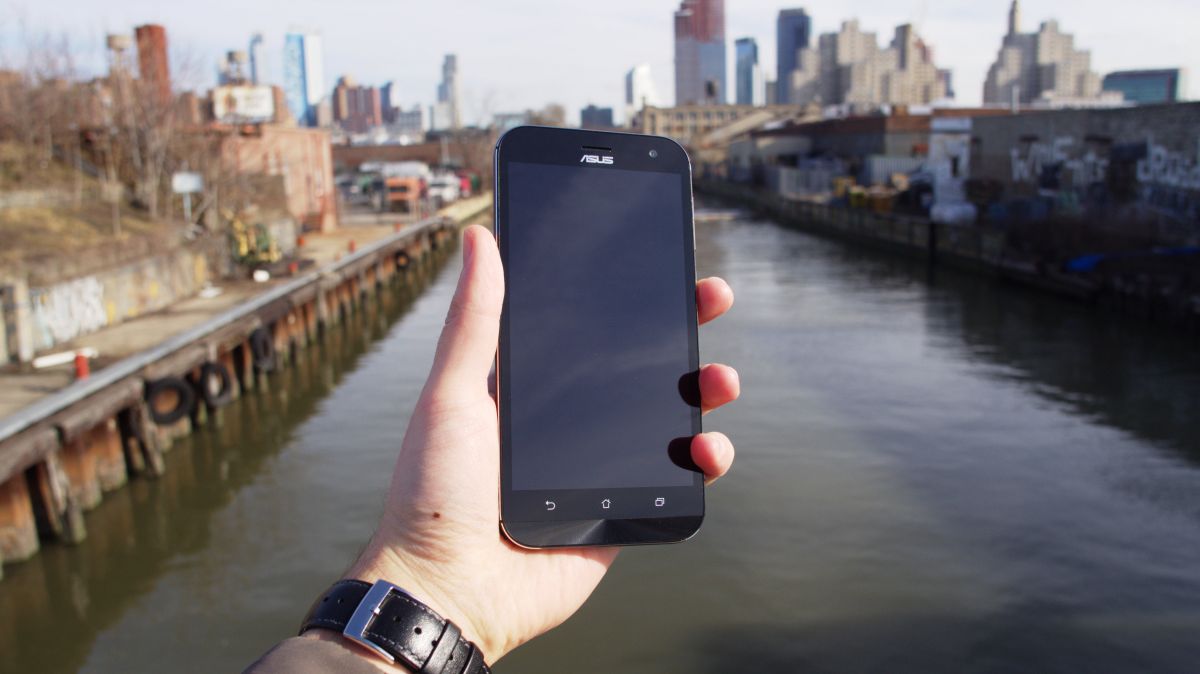
Introduction, design and display
There have been huge advancements in the lens technology found in today’s smartphones, but it’s still commonly the low point of the experience. The Asus ZenFone Zoom hopes to reverse that trend.
To do that, Asus’ latest phone packs in a snapper that’s capable of 3x optical zoom, a unique capability that allows you to magnify a photo without seeing any of the added visual artifacts caused by digital zoom.
The Zoom isn’t the first smartphone to have optical zoom. That honor belongs to the Samsung Galaxy S4 Zoom, which was capable of an even more impressive 10x optical zoom. Comparing the two, the Zoom clearly wins the battle when it comes to being a much thinner device.
And while it has an impressive rear-facing camera that is packed with features, there isn’t much else about the package that helps it stick out against its competitors. The build quality is a clear step-up from the cheap-feeling and surprisingly fragile Asus ZenFone 2, but the Zoom values novelty over practicality. And where its ZenUI attempts to be practical, it often ends up getting in the way, just like the protruding camera bump.
All said, this is easily the best looking Asus phone yet, but the added camera and a svelte look result in a price tag of $399 (about £286, AU$554, though the ZenFone Zoom isn’t available in these regions). Like the ZenFone 2, the Zoom is available unlocked, except it costs $100 more, and largely mirrors its specs.
The deciding factor is this: If you’re one who generally prefers to shoot on auto mode, letting the camera do the heavy lifting with minimal input, you’ll be better served by other Android phones with far less bloatware, a smaller chassis and buttons with more “click” action.

Design
Asus has raised its own bar with the design of the ZenFone Zoom. The effort here scraps the forgettable aesthetic of the ZenFone 2 in favor of a phone that has fewer bad sides. But, refined as it may be, it isn’t in the same league of more precisely engineered smartphones chasing after the “world’s thinnest” crown, like the Samsung Galaxy S7 and the Google and Huawei-made Nexus 6P, to name a few.
But the ZenFone Zoom has visual flourishes in spades. The deep blue spun metal effect is the most noticeable effect, giving its face some flair to stand out.
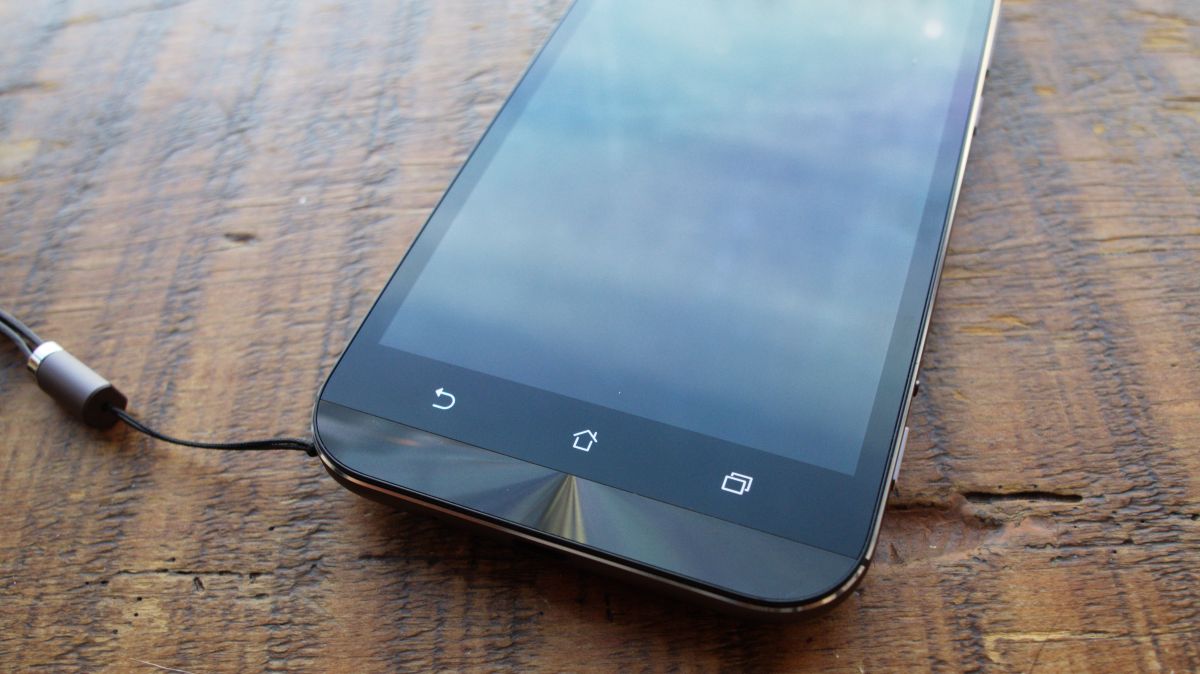
The guts of the Zoom are nestled into an anodized aluminum frame that gives off a luxurious look and feel, but the horizontal slits made to benefit antenna reception look rather similar to the iPhone 6S and some others.
You’ll find all of its physical buttons on the right side of the device. There’s your usual power button and volume rocker, but the Zoom also mimics the build of a point-and-shoot, with buttons dedicated solely to taking photo and video. It’s easy enough to learn the location of each, but reaching blind for one over the other can be a bit of a challenge because the buttons are too squishy, lacking the preferred tactility, or click action, of an actual camera.
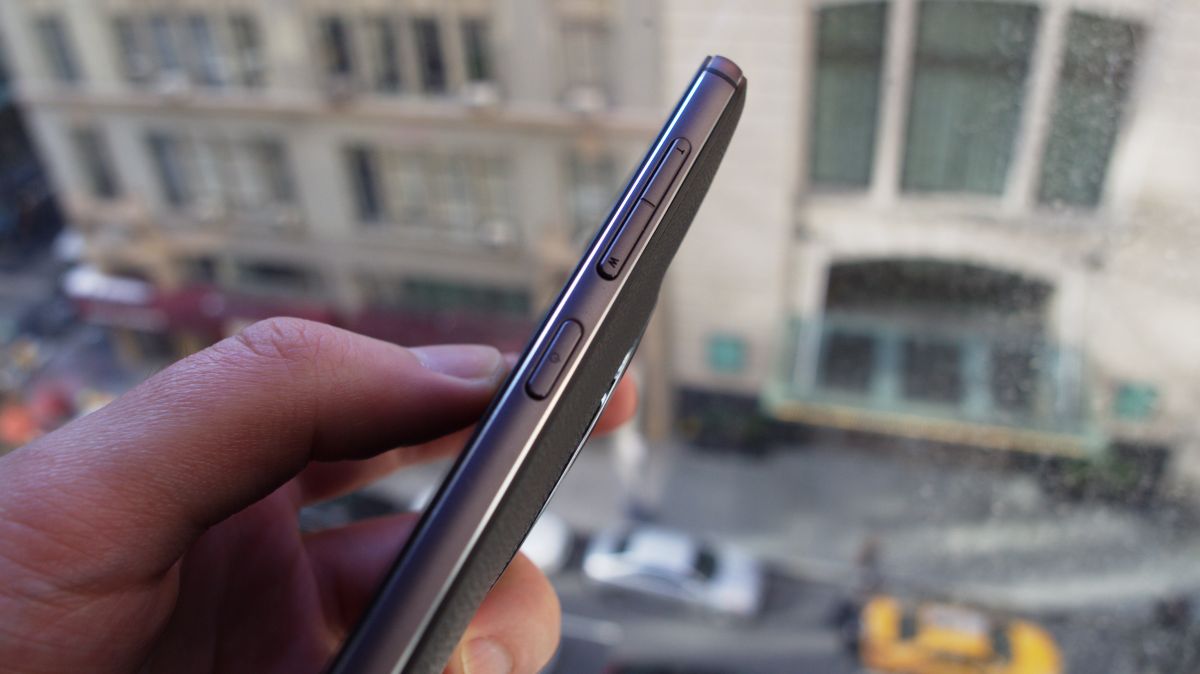
If you’re looking for the headphone port, it’s on the top. The micro USB port is on the bottom of the device, next to a loop where you can insert the included wrist strap to safeguard the phone from drops while snapping some pictures.
Flipped over, the Asus ZenFone Zoom takes an unexpected, but welcomed, turn in its design. Dark blue-tinted leather coats its back from top to bottom, and hugs the curves of the phone beautifully. The leather isn’t too grabby, it’s smooth to the touch and easy to pocket without a fuss.
Asus’ choice to add leather gives the ZenFone Zoom the look of a high-end camera. The protruding bump, for example, is circular and mimics a large camera lens.

There’s also a stitch-detailed leather lip, which acts as a grip when you’re snapping a picture. It shares the leathery backside with a small speaker grill, as well as pressed Asus and Intel logos.
Overall, the phone’s sizing is bigger than the ZenFone 2, coming in at 158mm in length, 78mm wide, and weighs 185 grams. At its thickest point (due to the most ultimate of camera bumps,) we’re dealing with almost 12mm. That handily beats the HTC One M9’s 9.4mm and the Nexus 6P’s 7.3mm, but won’t earn a trophy for this rather dubious distinction.
Display
Asus opted with a slick, 5.5-inch sheet of Gorilla Glass 4, the latest iteration in Corning’s tough glass. That’s good news because it was missing in the Gorilla Glass 3-protected ZenFone 2, which didn’t fare too well during our (unintentional) drop test.
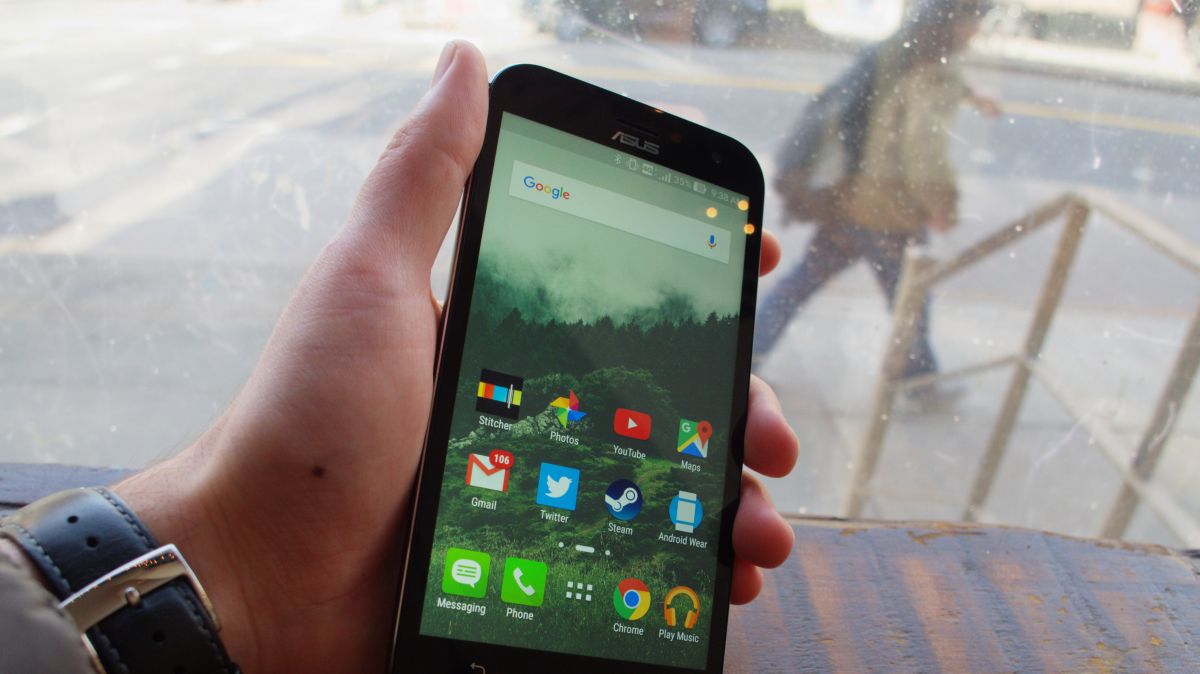
The screen isn’t bezel-free, but the 3mm cushioning the left and right sides isn’t bothersome. The blackened areas on its top and bottom are a bit bigger, but with reason: that’s where Asus stuck the front-facing camera, notification LEDs, and capacitive buttons, among other features.
The ZenFone Zoom uses the same LED-backlit IPS display found in the ZenFone 2. At its best, it’s capable of an image with a surprising amount of “pop.” But it’s guilty of the same low points, like how the screen is overly dim even whether or not auto-brightness mode is switched on. Turning it off and tweaking it to about half brightness should fix the issue, but it doesn’t. The effect lacks the vibrant glow that you’re probably seeking.
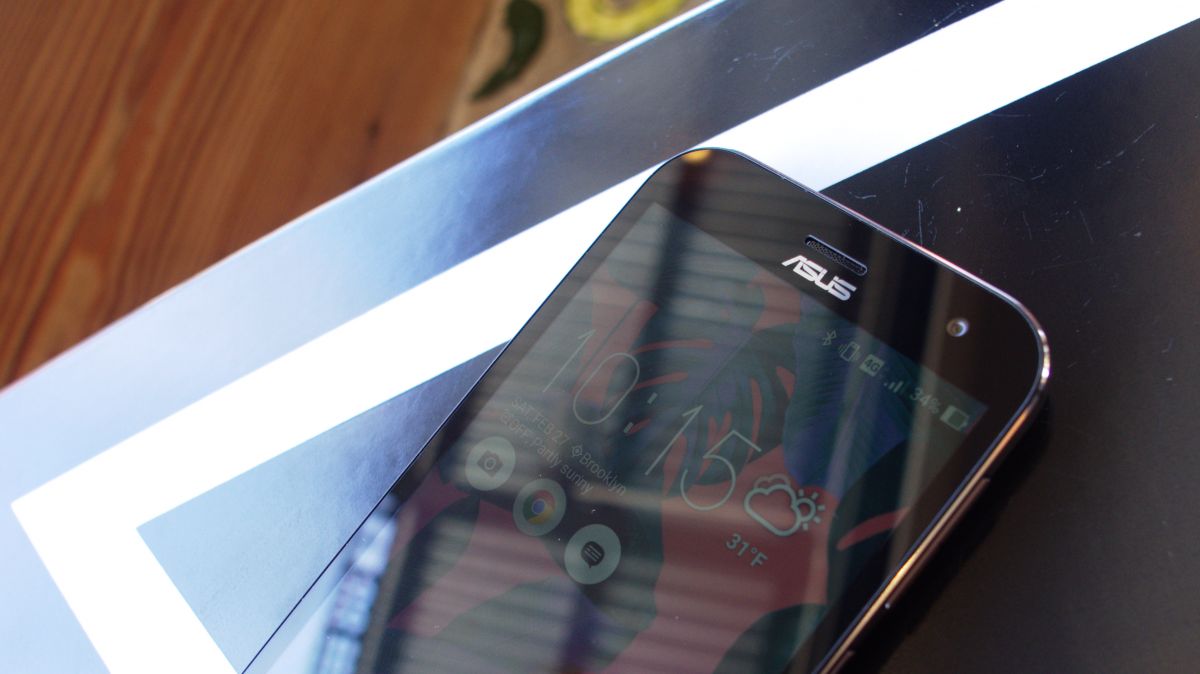
Brightness aside, the screen also lacks the high-resolution pixel density that’s available in many leading flagship smartphones, such as the Samsung Galaxy S7 and iPhone 6S. Though, as the Nexus 5X and OnePlus 2 prove, 1080p is still the standard and the spec that helps to keep the price down.
Specs, performance and software
Asus’ latest batch of phones distance themselves from the Snapdragon-packing majority with an quad-core Intel Atom processor clocked at 2.3GHz and PowerVR graphics processing unit (GPU). And as we saw with the ZenFone 2, which also houses the same processor and GPU, the Zoom can’t compete with the likes of the latest flagship phones, or even their previous iterations.
As you’ll see soon, its performance in our benchmarks might be lackluster compared to our elite group of best smartphones, but it’s no slouch.
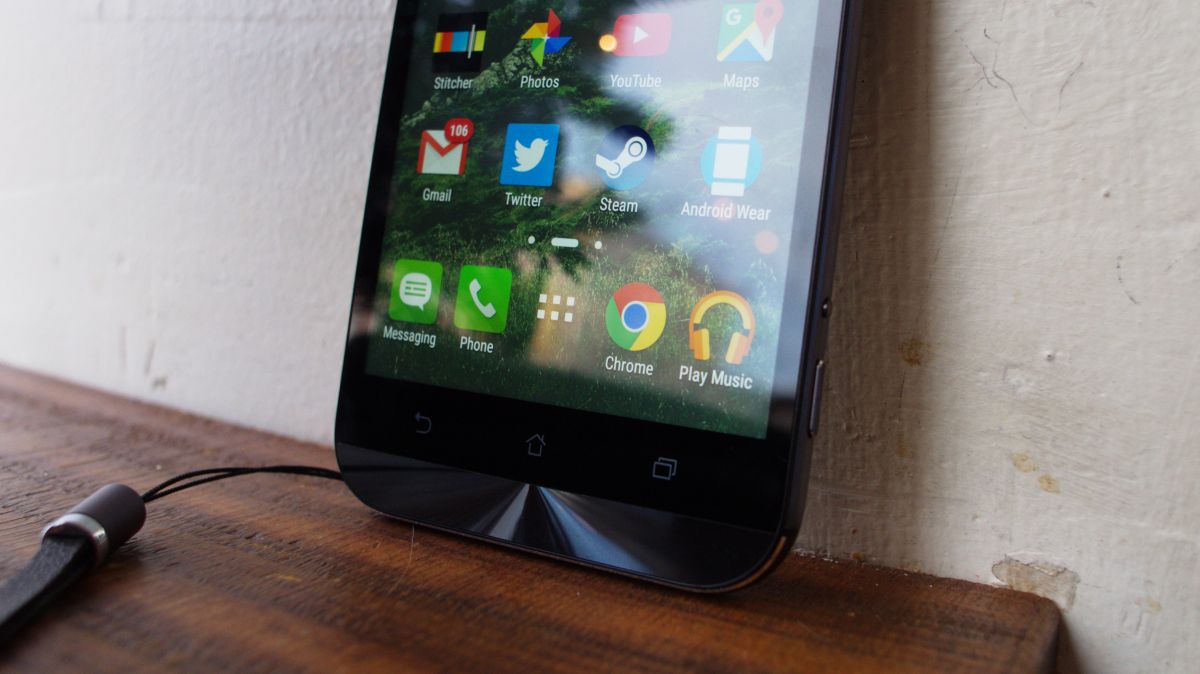
The added 4GB of RAM helps to keep the Android 5.0 Lollipop experience flowing nicely, even when you have more apps running than you probably should. Although a few bullet points on the Zoom’s spec sheet disappoint, this isn’t one of them. Here, the phone is right on par with recent releases, including the Samsung Galaxy S7.
The Zoom comes with a generous 64GB of internal storage out of the box, but almost 10GB of it is reserved for the OS, along with Asus’ heavy coat of ZenUI paint. Thankfully, there is a microSD slot underneath its removable leather back that allows for another 64GB of expandable storage.
Performance
Running the ZenFone Zoom through Geekbench 3, it averaged 2,840. This number, while not anywhere near what the latest phones can put up, shows that the Zoom will likely be powerful enough for most. It beats out the Samsung Galaxy S5, HTC One M8 and OnePlus One, but whether that’s enough power for your needs is up to you.
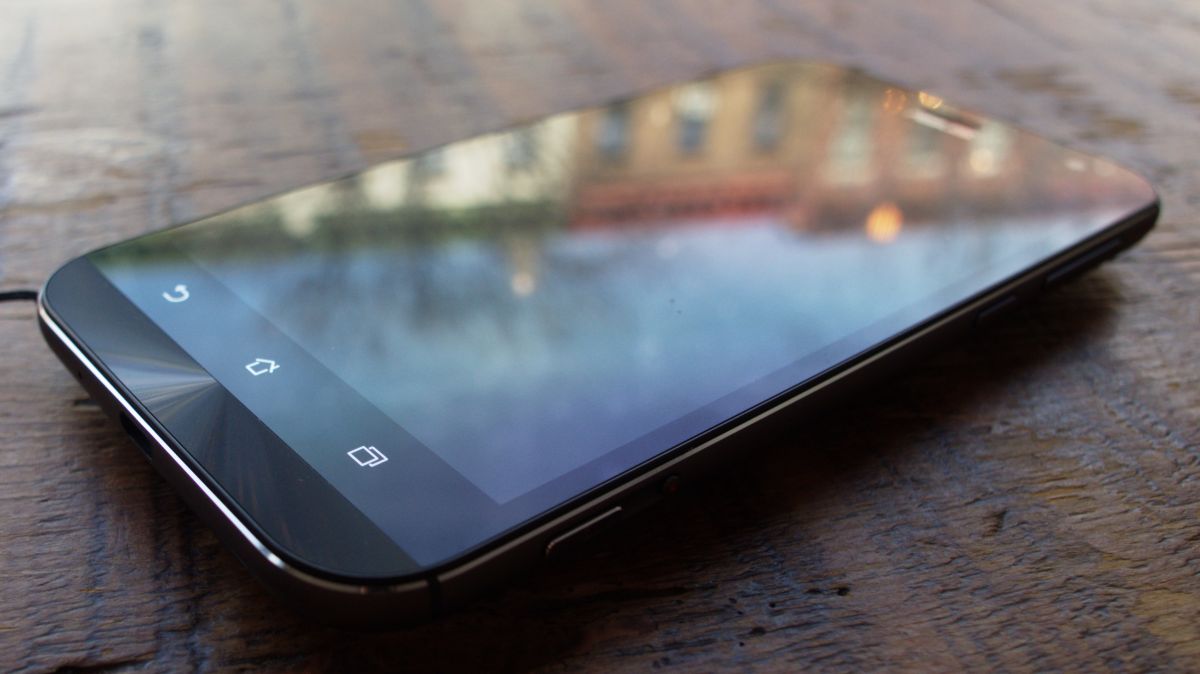
The specs built into the ZenFone Zoom produce decidedly mid-range results during our benchmarks. But, during real world testing, they deliver a zippy experience, whether you’re playing the latest 3D games available in the Google Play Store or just browsing through Twitter.
But whatever it is you end up doing for enjoyment, you probably want it to sound good, too, right? Like the quality of the camera in most phones, speaker placement and throughput is also a common area that manufacturers just can’t seem to nail down.
This hefty phone could have benefitted greatly from (and seems to have more than enough room for) two front-firing speakers. Instead, the sole speaker is on the lower back back of the Zoom. It produces passable sound at a low volume, but you’ll want to have a set of headphones, like the ones included with purchase, nearby for anything above a whisper.
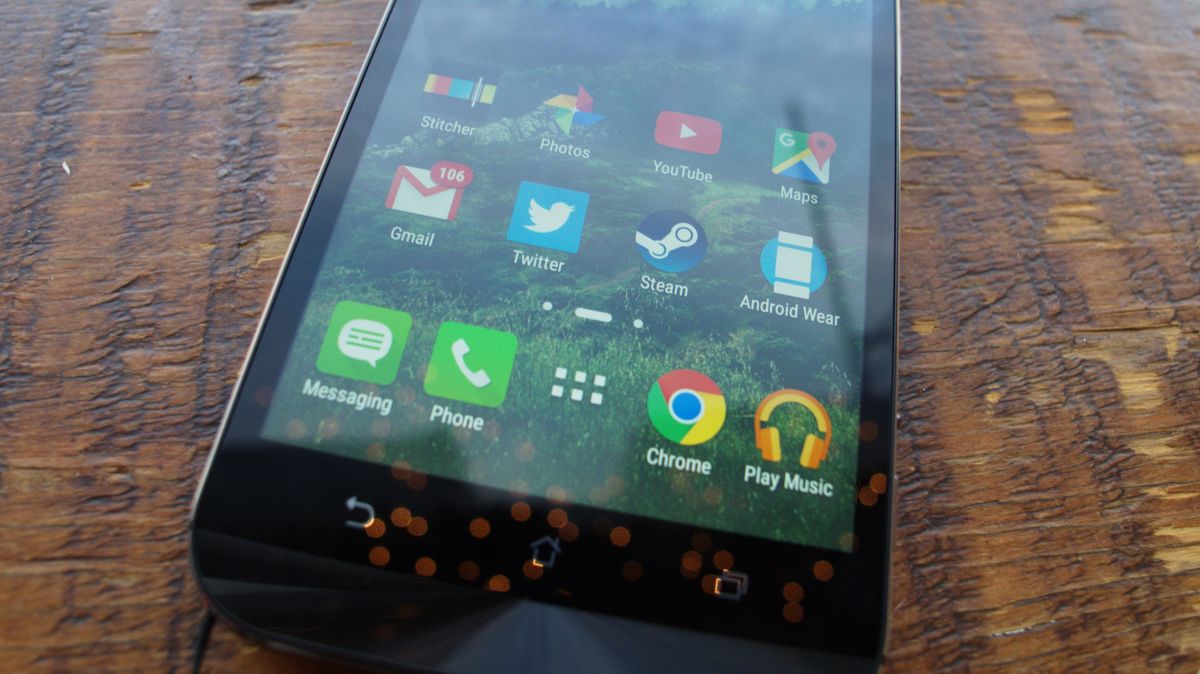
Booting the phone up from an off-state takes a rather lengthy 53 seconds, but this isn’t a problem for those, like me, who rarely power down their devices fully. That’s only been a concern when a phone like the Nexus 6 took a minute and a half to turn on.
Call quality with the Zoom is crisp, coming through nicely at a range of volumes. The person on the other side of the call also didn’t report any issues, nor could they tell when I switched from speakerphone and talked to the phone from across the room.
Android 5.0 Lollipop and ZenUI apps
In a perfect world, the line between Google’s own stock Android operating system and each manufacturer’s overlay would be blurred to the point of not noticing where one stops and the other begins. Unfortunately, like the ZenFone 2, that isn’t the case with the ZenFone Zoom. There’s a harsh divide between what’s essential and what just gets in the way.
The Zoom comes with Android 5.0 Lollipop pre-installed and thankfully, ASUS claims it’ll be updated to Google’s latest, Android 6.0 Marshmallow, soon enough.
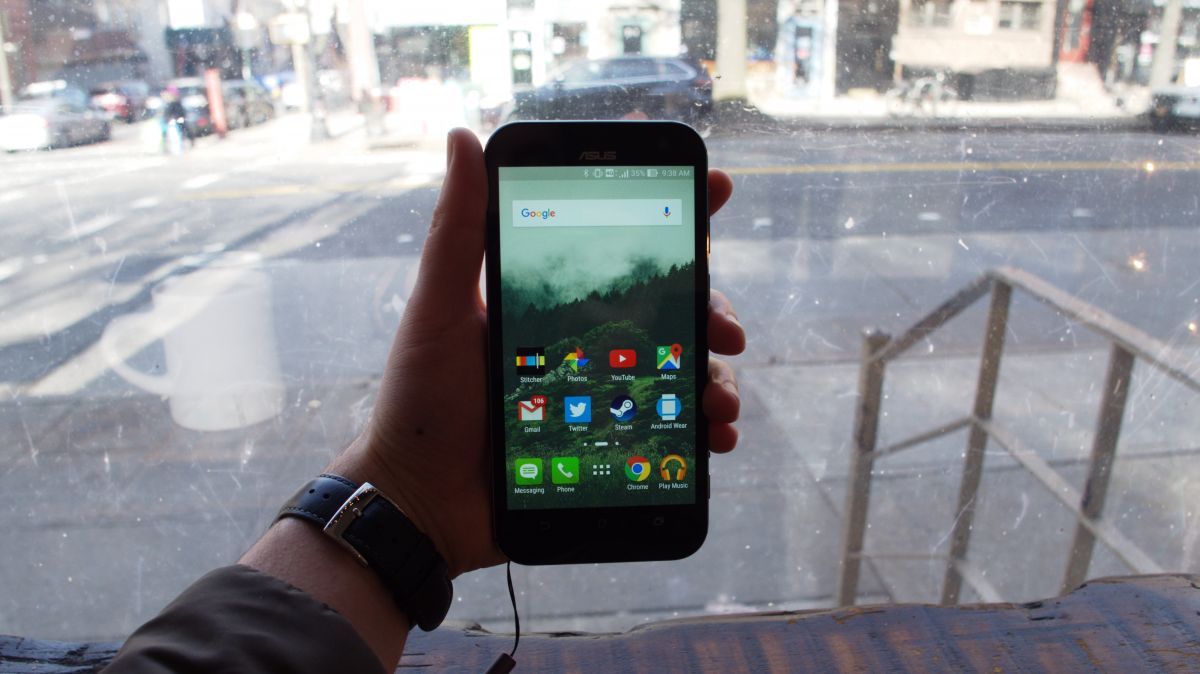
Regardless of the underlying OS, Asus’ ZenUI is laid on thick. From the very first use of the phone, you’re bombarded with pop-ups and a default layout that makes stock Android seem like a distant paradise. But, for newcomers, it’s a good, albeit slightly overwhelming, crash-course into the world of Android.
Similar to Matt Swider’s experience with the ZenFone 2, I actually did find that there were a few customization options that made my time with the Zoom enjoyable. The pull-down quick settings panel is filled with standard options, like switches for Bluetooth, Wi-Fi and Airplane mode. But, I appreciate the quirkier additions, like one-handed mode. This allowed my thumb to take a break by shrinking the screen’s image down and moving it to wherever it’s easier to reach.
ZenUI also offers a handy knock-to-wake feature, which became my primary method for unlocking the Zoom. Also, Asus’ flavor of Android lets you craft customizable gestures to open apps straight from sleep mode. For instance, I set up the response for drawing the letter “C” on the screen to boot into Chrome. It’s snappy, clever and it makes life easier.
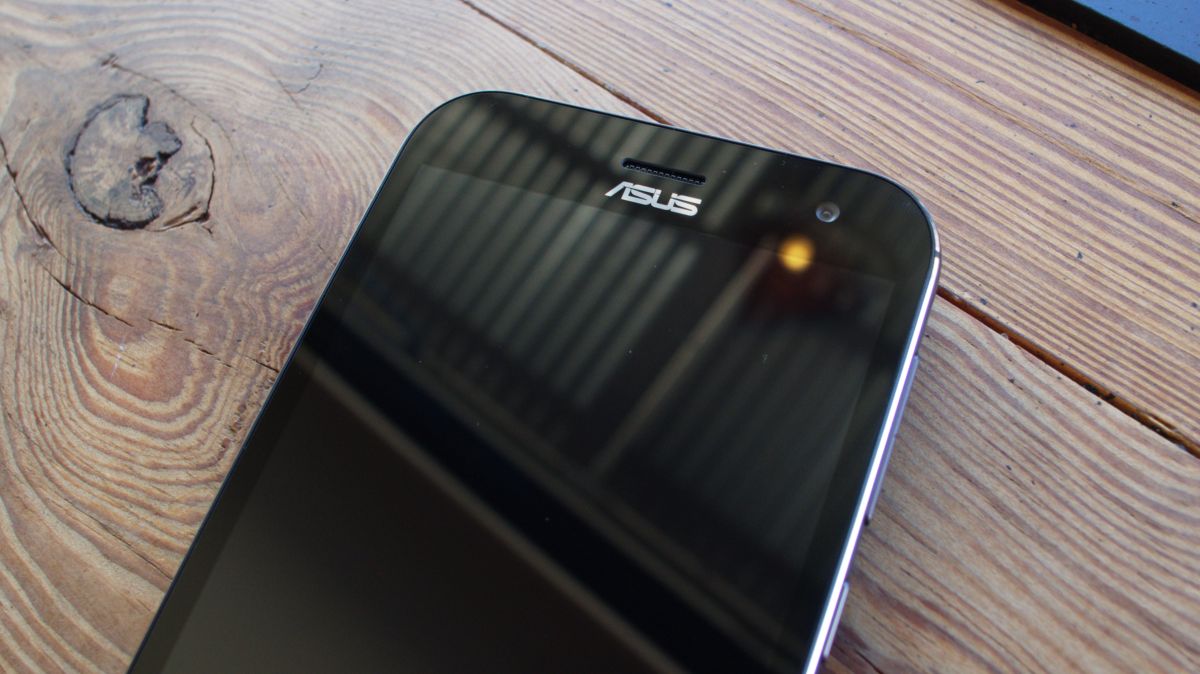
Then, there’s Glove Mode, which cranks up the touchscreen’s sensitivity so that it will work better with a glove equipped. The other unadvertised perk of this mode is that it makes touching the screen with a wet finger much easier. This is crucial when I’m doing the dishes, but want to change the song playing through Google Music.
Speaking of music, another quick setting that I really enjoyed was AudioWizard. It’s a ZenUI app that lays all the control for equalizer settings in your hands. You can create a unique sound for music, movies, games, but you’ll need to remember to switch it on yourself. I applied some extra bass for my tunes and, while I’m the type who prefers to listen at near-reference levels of EQ, it sounded pretty awesome.
The Asus ZenFone Zoom comes with over 30 apps pre-installed, many of which are superfluous to the core experience of using the phone. But, that doesn’t necessarily mean that they’re all bad. There’s a standard Asus-made app for weather, music, note-taking and the like. Most of them are just fine if you don’t already have a preferred go-to option.
I’m partial to very few apps, so I immediately hid most of the bloatware. I know that I’m not the only one who does this. After spending a few weeks with the ZenFone Zoom, I realized that I had switched off almost every instance in which ZenUI inserts itself into the experience.
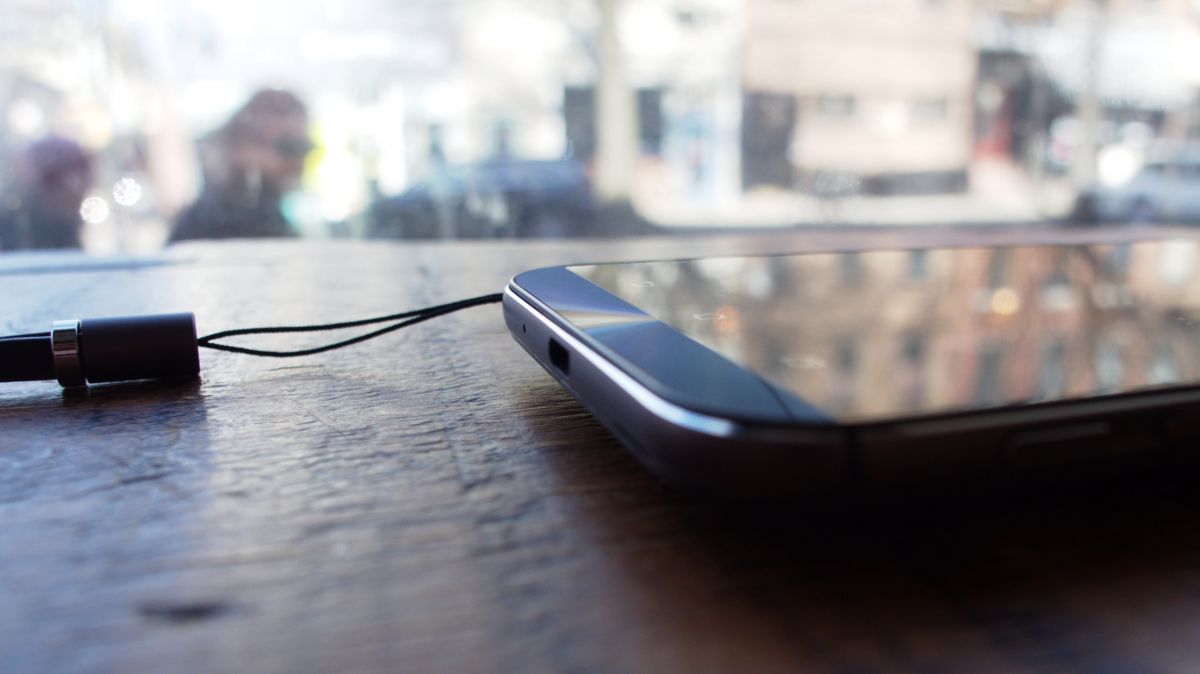
I hid most of the pre-installed apps, only because I couldn’t uninstall them. For me, the hand-holding that ZenUI brings with it was a turn-off. But again, it’s what some people will want or need.
Despite my earlier complaints about the screen, watching video on the Zoom is pleasurable, thanks to its large 5.5-inch display. Though, to get the screen looking in a way I wanted it, I had to turn off auto-brightness, then crank it up to the max, which does a number on the battery life.
The same goes for playing games. You’re in for a good time, with the framerate and touch responsiveness never failing to deliver a smooth experience. So long as the screen is pushed up to the max, things look good. But unfortunately, the rear-firing speaker doesn’t do you any favors, so it’s best to keep a set of headphones handy.
Camera and battery life
This is the moment of truth for the Asus ZenFone Zoom. It has the specs, but do they result in a picture you can’t get anywhere else? First, let’s dig into what makes the protruding, rear-facing camera stand out from the rest of the crop.
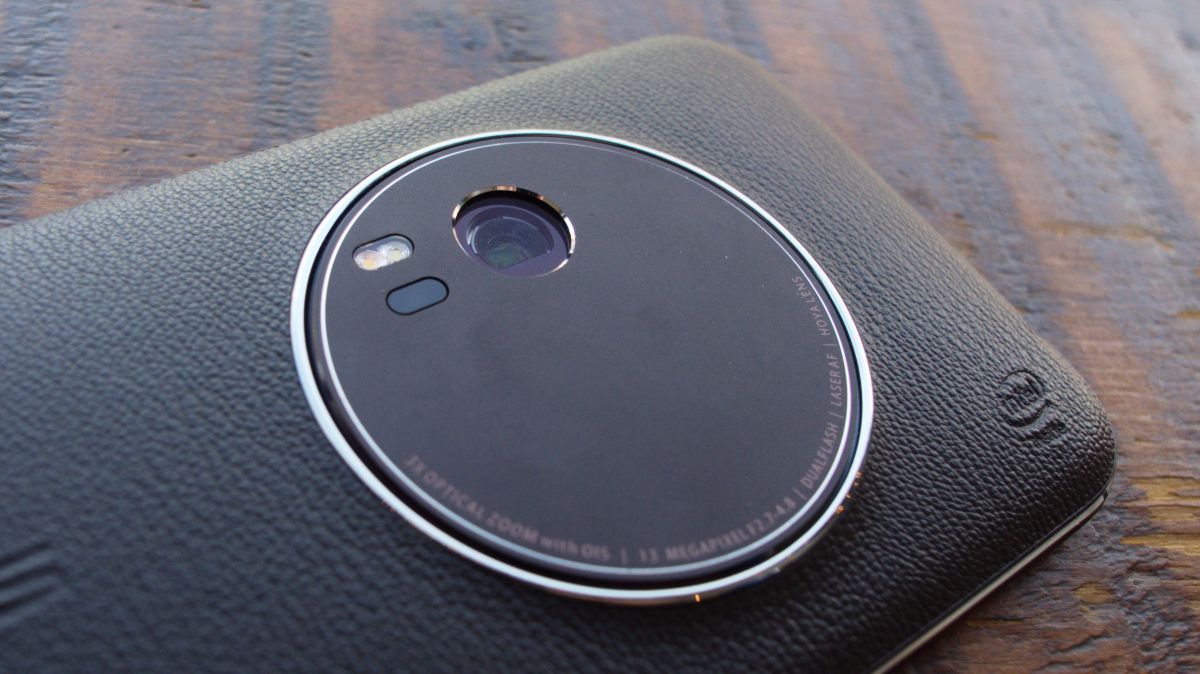
It’s a 13MP lens, with 3x optical zoom to allow for noise-free photos. It has an aperture that can adjust between f/2.7 and 4.8 to accommodate for both low-light and normal shooting conditions.
The other important characteristic to note here is that the Zoom packs in optical image stabilization (OIS,) the same tech found in the iPhone 6 Plus and iPhone 6S Plus camera to cut down blurring on the hardware level.

If you’re feeling confident, you can (and probably should) shoot in manual mode. While the auto mode makes things easy, I found that the photos produced with this setting were consistently nothing remarkable. Manual mode gives you much more control, which, when in capabble hands, can deliver incredible results.
To highlight the Zoom’s strengths and weaknesses, I took similar photos with an iPhone 5S, the phone that now retails for around the same price and one that I’ve been happily going steady with for the past few years. You can see those comparison shots on the next page.
Shooting video with the Zoom is just as easy as taking photos, thanks to the dedicated button next to the camera shutter. Manual shooting mode translates over to the video capability, allowing you tweak the fine details before you hit record.

Asus has provided tons of software-added effects to apply to your photos. Some are useful, while others are just for fun. My favorites, aside from manual mode, are the low light and night modes, which lower the aperture value to take better shots in darker environments, as well as the HDR, and “All Smiles” mode, which takes five burst shots, then lets you select the best one. We all have that friend or family member who is impossible to catch smirking.

Switching over to the 5.5MP front-facing camera, it takes shots at a fixed f/2.7 aperture and is capable of capturing 85-degree wide-angled selfies. While that isn’t as expansive as the 120-degree spread of the LG V10, the Zoom does try to make up for it with a selfie panorama mode, which is exactly what it sounds like. Like recent Samsung phones, it stitches together selfie photos for an all-encompassing, if incredibly narcissistic, look into your life.

This lens takes passable photos, perfect if you’re known to snap a selfie or two (or a million.) Like the main lens around back, Asus provides a few filters to add some versatility and fun to your photo-taking. The best one, without question, is the beautification mode, if only because it’s so utterly silly.
Here, the Zoom really benefits from being stocked with current specs that help to power the camera app to be a smooth, quick-performing experience. Pictures and videos record onto the internal storage or microSD quickly, so that you can pop off another masterpiece without waiting.
Scrolling between effects, some of which utilize the gyroscope and facial trait recognition, I never encountered any bit of slow down, though the phone did heat up a bit when under intense pressure.
At the end of the day, the camera isn’t revolutionary. I don’t think I’ve seen zoomed-in smartphone pictures look this good, but the flood of manual options only work to highlight how limited the hardware still is. So long as don’t expect DSLR-like results from the Zoom, you’ll be pleased. Personally, I prefer my iPhone 5S for its small size and rather capable lens, despite its lack of optical zoom.
Battery
Standard functions, like texting, playing games, and making calls can take their toll on a phone’s battery. The fact that Asus also encourages you to use the ZenFone Zoom as a standalone camera means that it better be long-lasting.
The Zoom comes with a 3,000mAh battery, which like the ZenFone 2, beats out the capacity found in the iPhone 6 Plus, Samsung Galaxy S6 and HTC One M9. Running a film-length, high-definition video that lasted 90 minutes drained the battery down by 26%, giving you plenty of power left to enjoy.
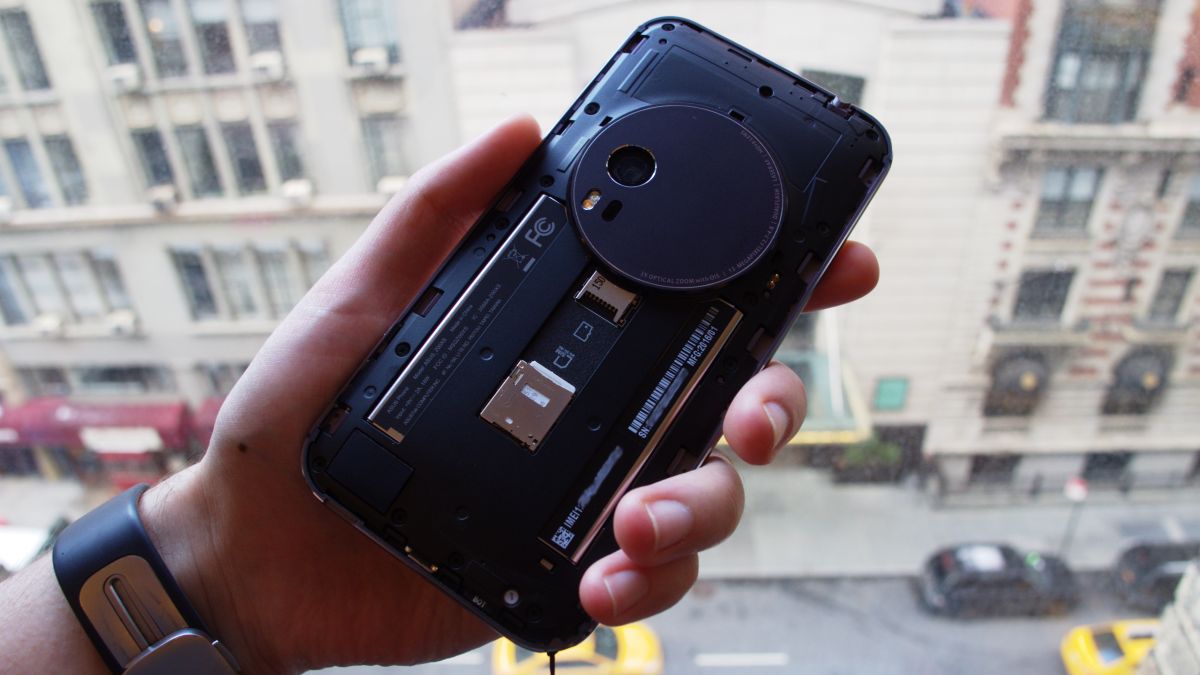
Unfortunately, it isn’t swappable. Popping the back off, you can see it peeking around the microSIM and microSD tray, but alas, it’s stuck in there. It’d be preferable if I could swap it out, but the blow is softened by the acceptable battery life.
A day with the Zoom generally saw me using the camera several times, listening to Google Music and being tethered to an Android Wear smartwatch over low-energy Bluetooth. In my experience, even during heavier use beyond what’s normal for me, like adding in an episode of Seinfeld on Hulu, the battery lasted for well over a day.
It’s ingrained into my habits to leave my phone on the charger before bed, so unexpected deaths by a drained battery are rare. But, the Zoom won’t punish you for forgetting. One of ZenUI’s strengths comes into play with its ability to go into power-saving mode, which really slows down the tick of lost battery life. Also, it can Fast Charge when plugged into a wall adapter, filling up about 50% of the phone in a half-hour.
Camera gallery






Most issues that I encountered above could be remedied by tweaking some settings in manual-shooting mode. But, as most people shoot in auto, this is a good look at how the Zoom shoots from the hip, so to speak.
Verdict
The Asus ZenFone Zoom tries its hand at more functionality than most of today’s smartphones offer, and for a fraction of the price. It doesn’t deliver a perfect experience, but no phone does. So, at that, is the Zoom good enough to be your next smartphone?
We liked
For $399 (about £286, AU$554, though the ZenFone Zoom isn’t available in these regions,) you’re getting a good value. It comes unlocked, and rocks a unique design, with a strange mixture of build materials that works, somehow. The slick, leather back, anodized aluminum trim and spun metal effects play off each other nicely.
The star of the show is, of course, the camera. It’s fairly capable in most lighting situations and the 3x optical zoom really makes a noticeable difference in how zoomed-in pictures turn out. It’s going to be difficult to go back to the digital zoom on my iPhone 5S.
ZenUI has its perks. If you dig enough, you’ll likely enjoy the knock-to-wake feature, as well as the battery-saving features that kick in to prolong your use of the Zoom.
We disliked
This phone is bulky. If not for the massive camera bump on the back, it would be much easier to pocket without feeling like your pants are about to rip. But taken as is, I’m not sure that many will want the big jump up in size and weight just to take slightly better photos.
On the whole, ZenUI is an aggressive, hand-holding experience that Android pros will likely despise. It has its good qualities, but, generally speaking, the faster you can hide the pre-installed apps, the better.
The camera can take noise-free photos at 3x optical zoom, but it took much more effort to snap good-looking photos out-of-the-box than it does with my older iPhone 5S.
Final verdict
Similar to the “Shot on iPhone” ad campaign showcasing the stellar photos taken by the iPhone 6S, professionals will likely be able to work small wonders with the Zoom, too.
The Zoom costs $100 more than the ZenFone 2, but is improved in ways that some may not care about. As the name hints, the camera is the real focus. The lackluster lens found in last year’s Asus phone hasn’t just been overhauled, it has been replaced in its entirety in the Zoom.
If optical zoom in a smartphone appeals to you, your options are limited. At that, the Asus ZenFone Zoom is currently your best bet. There are a few more reasons to enjoy this souped-up camera phone, but with it, also come some frustrating design choices that get in the way of a breezy user experience.
Source: techradar.com











































Nobody loves ASUS…